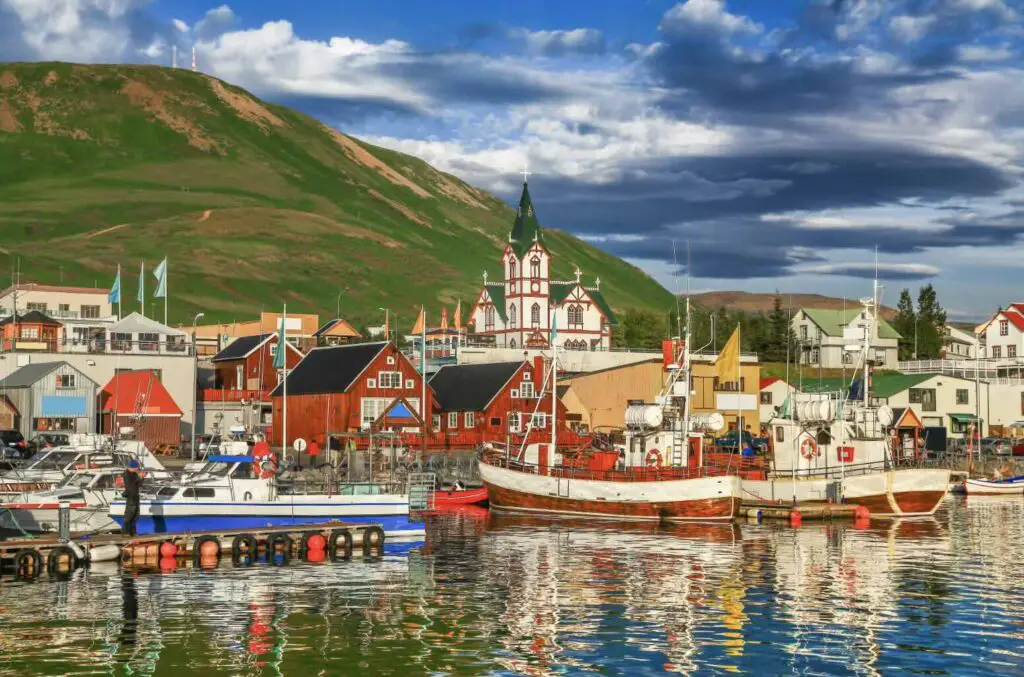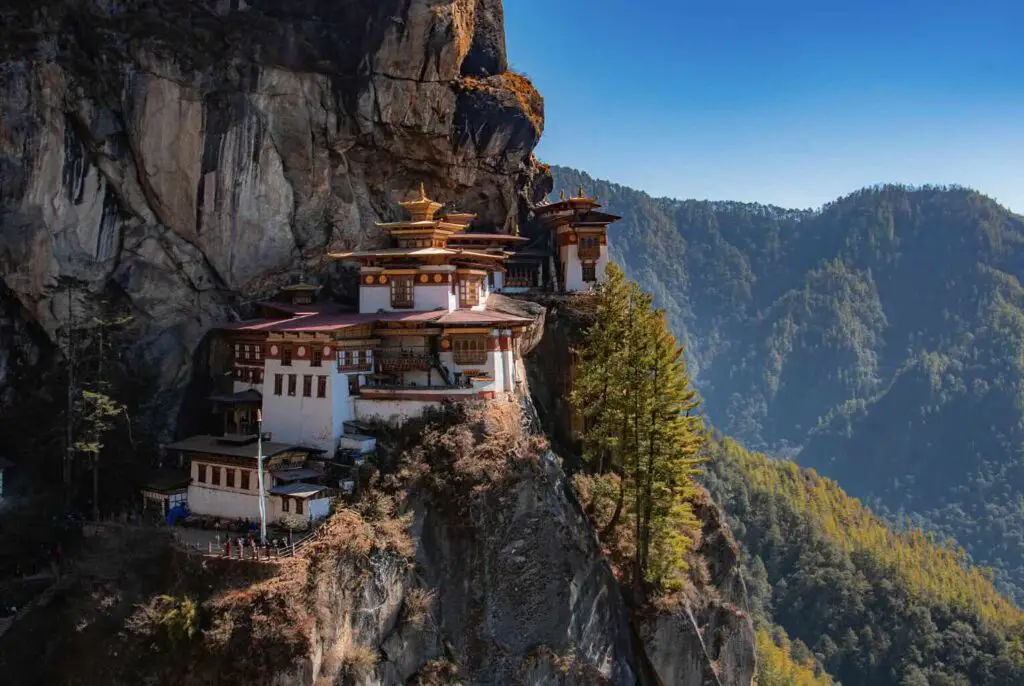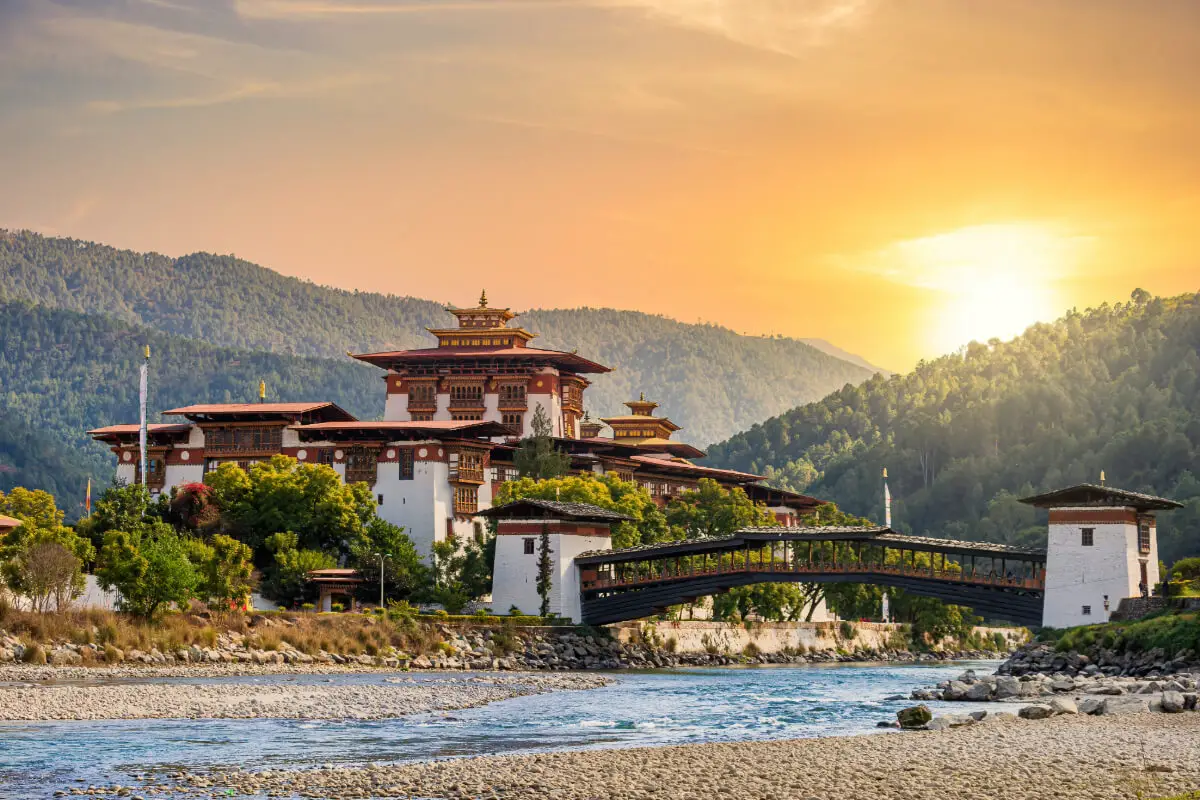Exploring why some countries have fewer people isn’t just about counting them; it involves understanding the different reasons behind the numbers. Whether it’s the land they live on, their history, or how they make choices based on what they have, a lot goes into why some places have smaller populations.
Looking at these reasons, we can learn so much about the world and its people.
Table of Contents
- Overview of Population Dynamics
- Case Studies: The Smallest Nations
- Challenges Faced by Low-Population Countries
- Opportunities and Innovations
- Turning Challenges into Opportunities in the World’s Least Populated Countries
- Tourism as a Sustainable Economic Engine
- Innovative Agriculture and Food Security
- Education and Technology: Bridging the Distance
- Renewable Energy: Leading the Charge
- Cultural Renaissance: Reviving and Thriving
- Partnerships for Progress
- Related Questions
Overview of Population Dynamics
Factors Contributing to Lower Populations in Some Countries
When exploring why some countries have smaller populations, it’s essential to delve into a tapestry of reasons ranging from geographical and historical to socio-economic factors. Addressing population size isn’t simply a matter of counting heads; it’s understanding the stories behind the numbers.
Geographical Constraints: Geography plays a pivotal role in shaping a country’s population. For instance, harsh environments like deserts or icy tundra offer limited resources for sustaining life. A prime example is Iceland, where the expansive glacial landscapes and volcanic terrain restrict large-scale human settlement, contributing to its lower population density.
Historical Events: History leaves a lasting imprint on population trends. Wars, colonization, and pandemics have historically decimated populations and influenced demographic patterns for generations. The impact of such events may lead to a prolonged population recovery period, exemplified by countries that have endured significant conflicts or health crises.
Economic Factors: A country’s economic structure significantly influences its population size. Industrialized nations tend to have lower birth rates due to better access to education and family planning resources. Conversely, countries with less economic development often experience higher birth rates but may also face higher mortality rates due to inadequate healthcare infrastructure.
Policies and Governance: Government policies directly affect population dynamics. Strict policies like China’s previous one-child policy have resulted in slower population growth. Similarly, immigration policies can encourage an influx of new residents, contribute to population growth, or severely limit it, maintaining smaller population sizes.
Social and Cultural Influences: Cultural norms and societal values also play a crucial role. In many developed countries, there’s a trend towards later marriages and family planning, leading to lower birth rates. Cultural factors can also influence the desire for smaller or larger families, profoundly impacting a country’s population.
Technological Advancement and Healthcare: Advances in healthcare and technology contribute to lower birth rates. With better healthcare, infant and child mortality rates decrease, leading to families choosing to have fewer children. Additionally, technological advances and access to information can lead to increased awareness and utilization of family planning methods.
Countries like Monaco, Iceland, and Bhutan illustrate these factors with smaller populations. Monaco’s limited geographic size, Iceland’s challenging terrain, and Bhutan’s focus on environmental conservation and sustainable development perfectly encapsulate how geography, policy, and socio-economic factors converge to influence population size.
Understanding the nuanced and interconnected reasons behind why some countries have lower populations reveals that there is no single contributing factor. Instead, the interplay of geographical, historical, and socio-economic elements, woven together through the lens of human experience and governance, shapes the demographic landscapes of our world.

Case Studies: The Smallest Nations
Environmental Conservation and Sustainable Living
One lesson in the vast expanse of the world’s least populated countries reverberates with clarity: the intricate yet profound connection between humans and their environment. These nations, often characterized by sprawling wilderness and untouched landscapes, showcase the paramount importance of environmental conservation and sustainable living practices.
Firstly, the pristine condition of natural habitats in these areas illuminates the benefits of implementing and adhering to strict environmental protection policies. Countries such as Bhutan have made strides in this arena by maintaining a constitutional mandate to preserve at least 60% of their land under forest cover.
This not only aids in biodiversity conservation but also stands as a testament to the country’s commitment to fighting climate change. The take-home message here is straightforward: prioritizing environmental preservation can lead to healthier ecosystems and, by extension, a healthier planet.
Moreover, the lifestyle choices of inhabitants in the least populated countries often reflect a deep-seated respect for nature. This respect translates into practices of sustainable living that have been passed down through generations.
For instance, in places like Greenland, the indigenous Inuit people have long practiced sustainable hunting methods that ensure species’ survival and the ecosystems that support them. Such practices underline the concept of living in harmony with nature rather than exploiting it—emphasizing the principle of taking only what is needed to sustain oneself and one’s community.
Another key learning from these sparsely populated areas is the innovative use of renewable energy sources. The limited access to conventional energy infrastructure has propelled countries like Iceland to tap into geothermal energy, effectively harnessing the power beneath their feet to heat homes and generate electricity.
This reduces reliance on fossil fuels and positions renewable energy as a feasible, sustainable alternative for the rest of the world. It serves as a potent reminder of the untapped potential of renewable resources and the importance of innovation in tackling global energy challenges.
The decrease in population pressure in these countries also offers a unique lens through which we can view human activity’s environmental impacts. Lower population densities result in reduced pollution, less waste production, and decreased strain on natural resources. This relationship highlights the critical need for sustainable urban planning and resource management practices worldwide, especially in densely populated regions.
Finally, the resilience of communities in the least populated countries in the face of environmental challenges is noteworthy. Their ability to adapt to the changing climate, often with limited resources, provides invaluable insights into building climate resilience. From constructing homes that can withstand extreme weather to diversifying crops to prevent food scarcity, these communities embody the spirit of innovation and adaptability—key components in the global fight against climate change.
In conclusion, the world’s least populated countries serve as living laboratories for studying the dynamic between humans and the environment. From conservation efforts and sustainable living practices to renewable energy adoption and resilience building, these nations offer many lessons on fostering a sustainable and harmonious relationship with our planet.
As we face mounting environmental challenges, it becomes increasingly clear that embracing these practices and principles is beneficial and essential for securing a sustainable future for all.

Challenges Faced by Low-Population Countries
Maintaining genetic diversity in small populations presents a significant challenge, which can affect their long-term viability. With fewer individuals, the gene pool is limited, making these populations susceptible to genetic drift—a random fluctuation in gene frequencies that can lead to a loss of genetic variation over time.
This reduction in diversity can increase the incidence of inbreeding, where closely related individuals breed, potentially resulting in an increased likelihood of inherited diseases and health issues. This impacts animal populations in isolated ecosystems, and human communities are cut off from larger groups, affecting their resilience against diseases and ability to adapt to environmental changes.
Education and employment opportunities can also be limited to small populations. With fewer people, there might not be enough demand or resources to support extensive educational facilities or a variety of jobs.
This can lead to a cycle of poverty, where individuals are unable to access the education needed to improve their job prospects. This forces them to remain in low-paying jobs or to leave their community in search of better opportunities elsewhere. Such migration can further reduce the population, exacerbating its challenges and potentially leading to its decline.
Furthermore, maintaining and providing infrastructure in areas with small populations can be economically challenging. Essential services such as healthcare, waste management, and telecommunications may not be as readily available or come at a higher cost due to the smaller tax base and the higher per capita cost of delivering these services to remote or sparsely populated areas.
This can lead to disparities in living standards compared to more populated areas, where economies of scale make infrastructure and services more feasible and affordable.
Integration with broader society poses another obstacle. Small populations, especially those with distinct cultural or linguistic identities, may face difficulties preserving their traditions while integrating into the broader society.
The balance between maintaining cultural heritage and adapting to external influences from larger, dominant cultures can be delicate. Without careful management and support, smaller populations risk losing their unique cultural identities, which are vital to human diversity and cultural richness.
Lastly, climate change represents a profound challenge for small populations, particularly those in geographically vulnerable areas such as low-lying islands, arctic communities, or isolated habitats.
These populations may lack the resources to mitigate and adapt to climate impacts, such as sea-level rise, extreme weather events, and ecosystem changes that directly affect their way of life and survival. These increasing frequency and intensity changes can overwhelm local capacities, necessitating external support and innovative solutions to enhance their resilience.
In conclusion, sustaining small populations is fraught with challenges that require a multifaceted approach, combining local knowledge and external support to ensure their thrive. Addressing these issues is crucial not just for the well-being of the populations directly affected but also for the global community, as it touches upon broader themes of biodiversity, cultural preservation, and social equity.

Opportunities and Innovations
Turning Challenges into Opportunities in the World’s Least Populated Countries
In the vast and often untouched corners of the globe, where the population might be as sparse as the amenities, life thrives against the odds. The world’s least populated countries face unique challenges, but nestled within these challenges, like seeds waiting to sprout, are opportunities ripe for the taking. From Bhutan’s green valleys to the ice-swept expanses of Greenland, these nations are teaching us valuable lessons on resourcefulness, resilience, and innovation.
Tourism as a Sustainable Economic Engine
One of the first things these countries recognize is the latent power within their natural and cultural heritage. Bhutan, famously measuring its progress through Gross National Happiness, has turned its commitment to preservation into a high-value tourism model.
By charging travelers a daily fee, Bhutan ensures that its tourism industry boosts the economy without overwhelming its environment or culture. Similarly, Greenland and Mongolia leverage their stunning landscapes to attract adventure-seeking tourists from around the globe, offering everything from dog-sledding to horseback riding in the vast, open steppes. These activities generate revenue, create jobs, and foster local entrepreneurship while maintaining the sanctity of their natural and cultural treasures.
Innovative Agriculture and Food Security
Agriculture in these sparsely populated areas is not about large scale but rather smart scale. With limited arable land and harsh climates, countries like Iceland have turned to ingenious solutions like geothermal greenhouses to grow crops all year round. Community-based fishing and farming practices often passed down through generations, emphasize sustainability and respect for nature.
These practices ensure food security while maintaining a low environmental footprint. Moreover, the focus on indigenous crops and traditional methods is sparking a culinary renaissance, weaving gastronomy into the fabric of tourism and securing a new source of economic growth.
Education and Technology: Bridging the Distance
Imagine attending a class with students from two other villages over a video call. This is the reality in some of Greenland’s most remote communities, where the internet bridges vast distances and connects learners to educational opportunities.
In Mongolia, mobile technology is used to provide herders with weather updates, grazing patterns, and market prices, empowering them with information to make better livelihood decisions. These countries embrace technology not to Westernize but to enhance their traditional ways of life, ensuring that even the most remote communities aren’t left behind in the digital age.
Renewable Energy: Leading the Charge
The scarcity of conventional energy resources in these countries is not a setback but a push towards innovation. Iceland’s volcanic activity is a tourist attraction and a source of geothermal energy, providing clean power and heating for almost the entire country.
Similarly, Bhutan’s fast-flowing rivers are harnessed for hydroelectric power, making it self-sufficient in energy and allowing it to export electricity. These renewable energy projects exemplify how environmental challenges can transform into economic opportunities and sustainability achievements.
Cultural Renaissance: Reviving and Thriving
The least populated countries find strength in their traditions in a world where globalization threatens to erode cultural identities. Festivals, arts, and craftsmanship are preserved, celebrated, and integrated into the economy through tourism and exports.
In Greenland, Inuit art and storytelling are finding new audiences worldwide, while Mongolia’s nomadic traditions are gaining recognition as intangible cultural heritage. By valuing what makes them unique, these countries are carving out niches that appeal to a global audience hungry for authenticity and meaning.
Partnerships for Progress
Finally, recognizing the power of collaboration, these nations often partner with international organizations, NGOs, and other countries to amplify their efforts. Whether climate resilience projects in the Pacific Islands or sustainable development initiatives in the Himalayas, partnerships are pivotal in turning challenges into opportunities.
Through sharing knowledge, resources, and technology, the least populated countries are crafting solutions for themselves and offering lessons for the wider world.
In essence, the world’s least populated countries showcase how limitations can spark ingenuity. By valuing their heritage, embracing technology, and harnessing their natural resources responsibly, they offer a blueprint for sustainable living that the rest of the world can learn from. It’s a testament to the human spirit’s resilience and collective ability to thrive, regardless of odds.
The stories behind the world’s least populated countries offer many insights into how challenges can lead to innovative solutions. From the icy lands of Greenland to the mountainous terrains of Bhutan, these places teach us that being small in number does not mean lacking in spirit or ingenuity.
Their experiences remind us that remarkable outcomes can emerge when limitations are faced with creativity and resilience. These countries are not just surviving but thriving, showing us the path to a sustainable and interconnected world.
At A Bus On A Dusty Road, we talk about travel, life, and ex-pat living. We are all about “Living Life As A Global Citizen.” We explore social, cultural, and economic issues and travel.
We would love to have you be part of our community. Sign up for our newsletter to keep up-to-date by clicking here. If you have any questions, you can contact me, Anita, by clicking here.
Listen to our Podcast called Dusty Roads. You can find it on all major podcast platforms. Try out listening to one of our podcasts by clicking here.
Subscribe to our A Bus On A Dusty Road YouTube Channel with great videos and information by clicking here.
Related Questions
Is It True America Is Both Capitalist And Socialist?
America is considered both a capitalist and socialist economy; America is deemed to have a mixed economy which means it has both capitalist and socialist characteristics. Having a mixed economy in America is essential because there are some things that we need the government to intervene with on behalf of the public good.
By clicking here, you can discover Is It True America Is Both Capitalist And Socialist?.
What Makes Confederates Different From American Colonists?
The American colonist was primarily English, Dutch, and French settlers who arrived in the American colonies beginning in 1607. They were the individuals who fought for the independence of America in the American Revolution from Great Britain. On the other hand, the Confederates were part of the southern United States. In 1861, they fought against the northern states of the union in what is known as the American Civil War.
By clicking here, you can discover What Makes Confederates Different From American Colonists?
All About England’s Rivers Flowing Into The English Channel
Several major English rivers flow into the English Channel. These rivers include River Avon, River Dart, River Ouse, and The Solent. All of these flow into the English Channel, a body of water between England and the European mainland, especially France.
By clicking here, you can discover All About England’s Rivers Flowing Into The English Channel.

